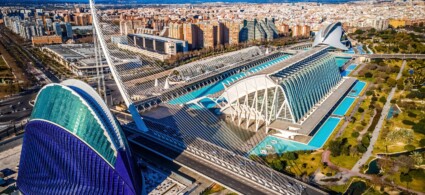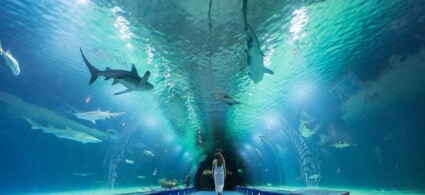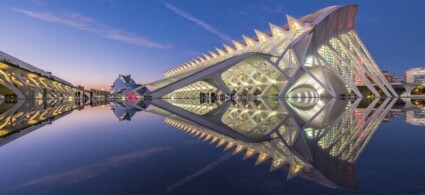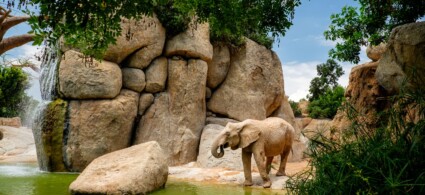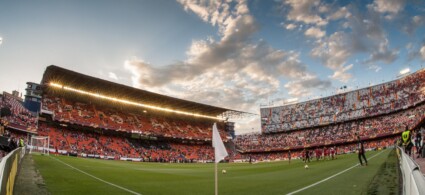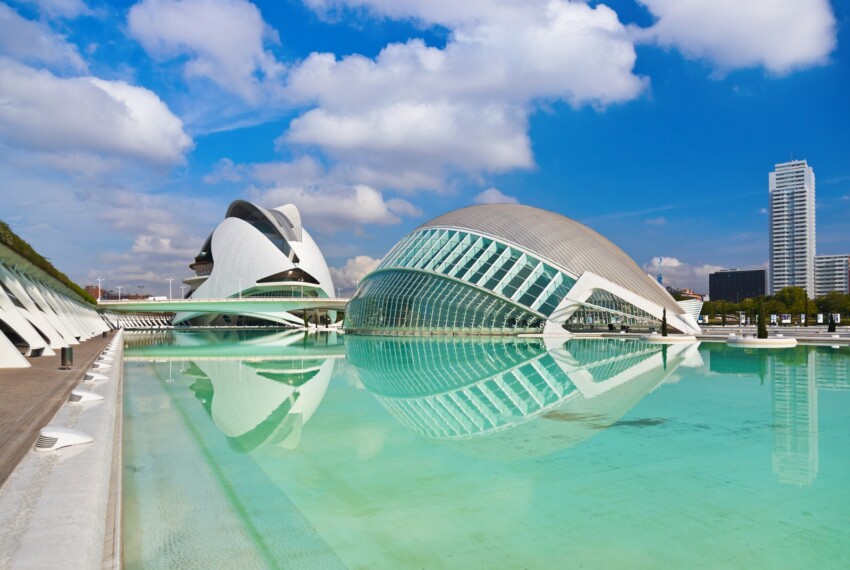

The first thing that springs to mind when wondering what to see in Valencia is undoubtedly the City of Arts and Sciences, or Ciudad de las Artes y la Ciencias in Spanish. Known simply by its initials CAC, it is a true jewel and a shining example of the redevelopment of the Turia river area on the edge of the city centre. A masterpiece of the famous architect Santiago Calatrava, it is the real star of Valencia.
But this exciting Spanish coastal city offers much more to tourists who choose to visit it, first and foremost the historical centre, compact and pleasant to walk around, with many narrow streets opening onto majestic squares and elegant churches. Between markets, shopping streets and world-class sports facilities, Valencia also offers a wide cultural scene thanks to its many museums, and the possibility of relaxing on its magnificent beaches overlooking the Mediterranean.
In a city that offers so much, aim for the best: here are the must-see attractions in Valencia, but if you’re in town for a weekend and can’t decide what to visit, check out our 3-day Valencia itinerary.
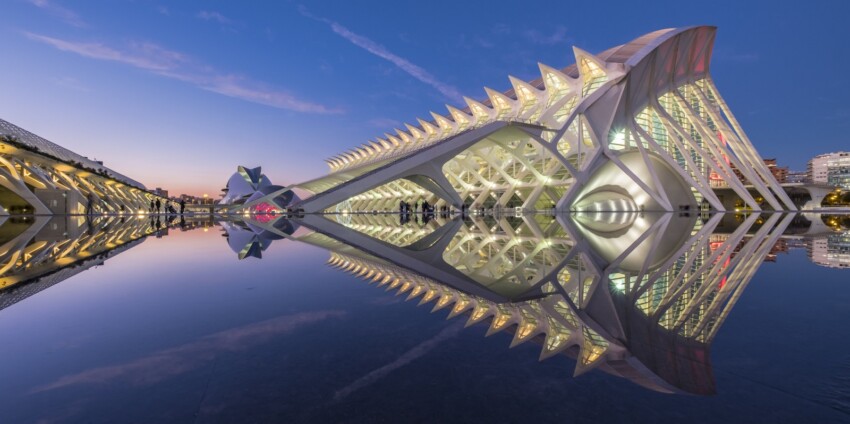
Valencia’s icon is the futuristic City of Arts and Sciences (CAC), an ambitious architectural complex set on the bed of the Turia river, whose course was deliberately diverted.
This grandiose construction, built between 1998 and 2005, bears the signature of the famous/famous architect Santiago Calatrava, famous for his very expensive works and the constant maintenance work required. The CAC is no exception and the money spent is still the subject of passionate debate among Valencians.
Excessive or not, the sum disbursed by the local government for the construction of this complex was certainly well spent as it has propelled Valencia into the Olympus of contemporary architecture.
Within this complex, arranged along a route of about 2 km, are:
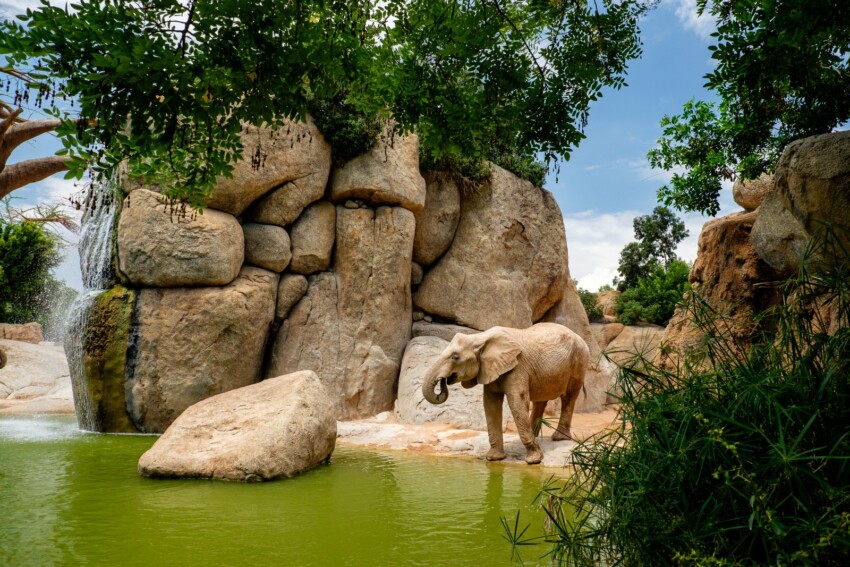
Valencia’s Bioparc is a corner of Africa in Europe: this innovative zoo with almost invisible barriers is entirely dedicated to African animals.
Children and adults alike are left open-mouthed in wonder as they admire leopards, lemurs, hippos and many other lesser-known and sometimes bizarrely named animals such as ‘aardvarks’ that seem to roam free in exotic and wild settings.
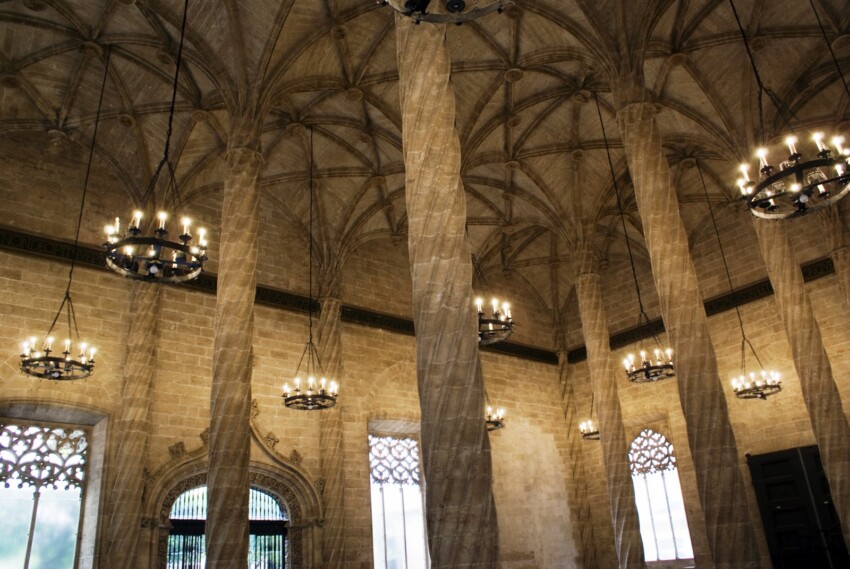
One of the finest examples of civil Gothic architecture, La Lonja is a splendid palace originally built in the late 15th century, during a period of strong economic and commercial expansion, to house the market for silk and other goods.
During your visit, you can admire the magnificent Hall of Columns (where contracts were made), the Hall of the Consulate of the Sea (the medieval mercantile court), the Patio of Oranges and the tower where thieves and rogue merchants were locked up while awaiting the arrival of the authorities.
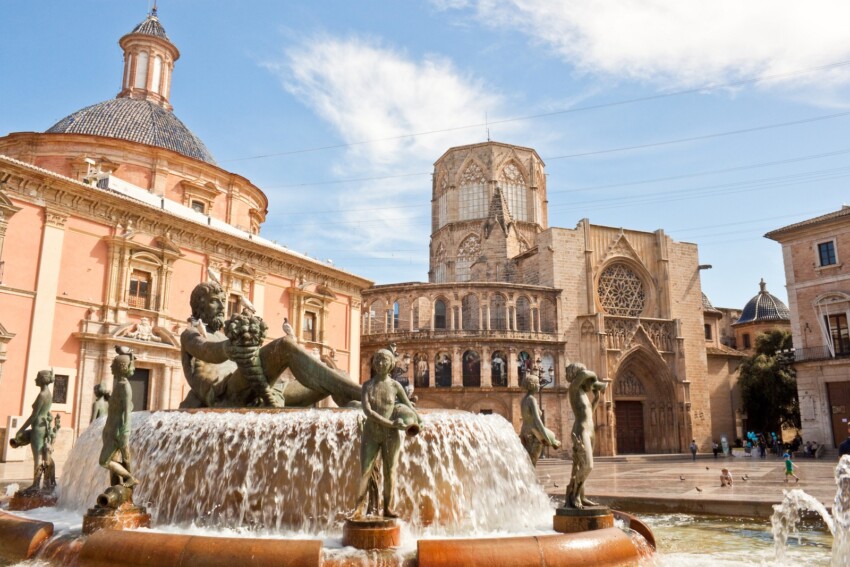
Like many churches in central and southern Spain, the Valencia Cathedral was built on the site of a former mosque after the reconquest of 1238. The layout is Gothic, but the chapels have Renaissance decorations.
Great artistic masterpieces preserved inside the church are the Italian frescoes on the altarpiece and canvases by Goya, but the piece that arouses the most curiosity is a Roman agate cup that some say represents none other than the Holy Grail, the cup from which Jesus drank at the Last Supper.
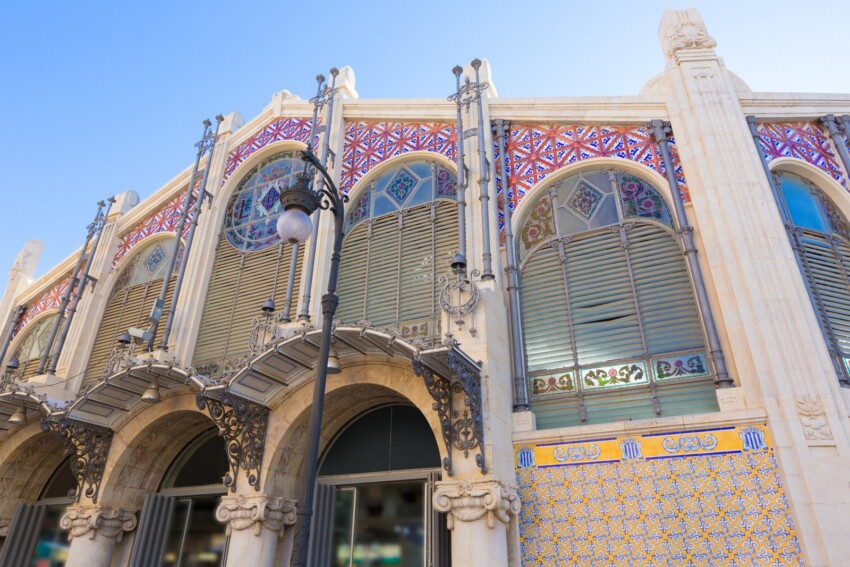
During a holiday in Valencia, a visit to the lively and colourful Central Market is a must. This huge covered market of fresh foodstuffs occupies an area of 8,160 square metres divided into two zones, one octagonal and the other irregularly shaped.
There are more than 300 vendors inside this historic market, established in 1938, and more than 1,500 people work there.
For the variety of meat, fish and vegetables on sale and for the very special atmosphere, it is loved equally by the citizens of Valencia and by tourists. A curiosity: Valencia’s central market was one of the first to offer a home delivery service.
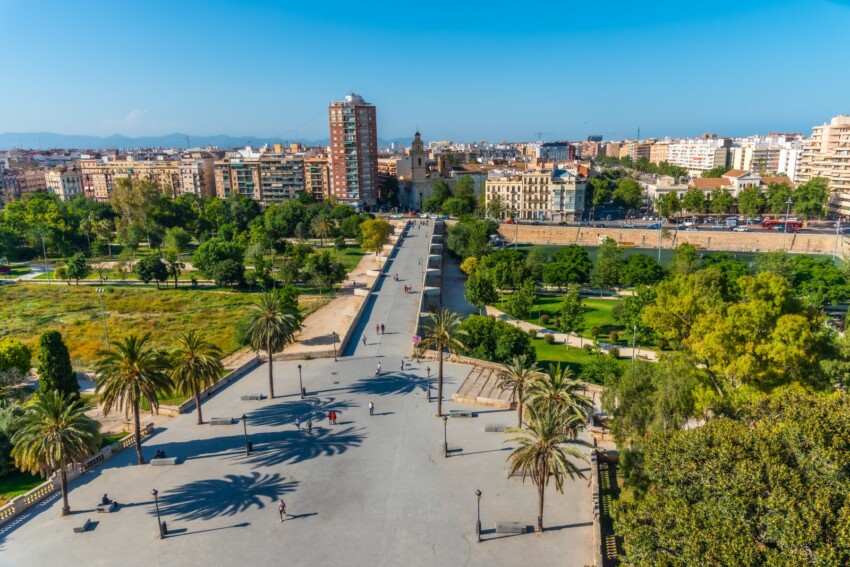
The Turia Gardens are a vast urban park located in the old bed of the Turia river, which flowed through the city until the 1950s. After a devastating flood in 1957, the river was diverted and the drained bed was transformed into one of the largest urban parks in Europe. Inaugurated in 1986, the park stretches approximately 9 kilometres and offers a green oasis in the heart of Valencia.
The park is divided into several thematic areas that include gardens, playgrounds, sports fields and bicycle and jogging paths. Among the main attractions are Gulliver Park, a huge playground inspired by ‘Gulliver’s Travels’ where children can climb the giant Gulliver figure, and Bioparc, a modern zoo that recreates natural habitats for animals. The City of Arts and Sciences is located at the eastern end of the park.
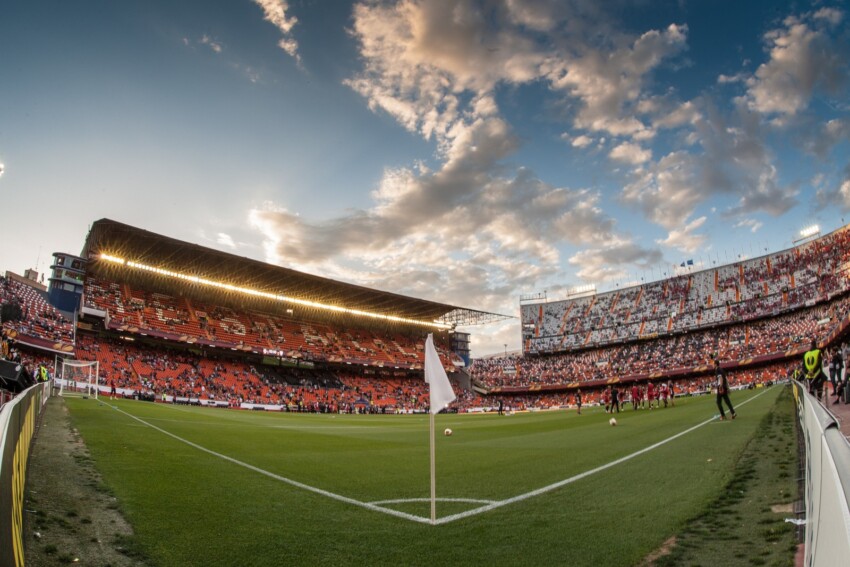
The Mestalla Stadium is the home of Valencia CF, the city’s main football team. Located not far from the Turia Gardens, on the opposite side of the city centre, it is a true icon of the city, and at the same time the oldest stadium in La Liga with over 100 years of history.
If you love football and you are in Valencia, you have the opportunity to visit the Mestalla stadium by taking part in a guided tour called the Mestalla Forever Tour, which takes place every day with times that vary depending on the season and day of the week. You will be able to enter the stadium and visit areas usually reserved for the players and insiders, such as the changing rooms, the press room and the tunnel leading to the pitch. During the visit you will be accompanied by expert guides who will tell you all the anecdotes and history of Valencia.
The Historical Museum of Valencia traces the more than 2000 years of history of the city of Valencia and the region of the same name, from its origins to the present day. Inside, everything takes place starting from the Agora, the main square, from which on the right you reach the permanent exhibition rooms, on the left those dedicated to temporary exhibitions and on the right you proceed to the media library.
Among the most interesting things at the museum is the ‘time machine’, through which you can visit the different faces of the city through its history. From there on you visit the permanent exhibition, which begins in Roman times when the city was called Valentia. Amidst mosaics, everyday objects, documents and works of art, you will be able to understand what life was like at that time thanks to a series of projected installations that recreate real scenes of everyday life in ancient Valencia.
Another interesting thing to see in Valencia is the Museo de Arroz, dedicated to an important economic activity of the region, namely rice cultivation, concentrated in the area around Albufeira. Housed inside a restored rice factory, it is one of the best museums of its kind.
You will be able to understand and learn about all six main stages of rice production: cleaning, peeling, whitening, grading the grains by size, tinting with oil and the last step, packaging.
The Casa de las Rocas, or Museo del Corpus de València, displays a fascinating collection of objects used in traditional Corpus Christi processions and celebrations. From here, the two magnificent decorated floats known as Las Rocas, hence the name of the building, come out for the procession. Located in the historical centre, its origin dates back as far as 1434 for the very purpose of storing all the objects for the city’s festivities, such as banners, flags, horses, giants and dwarfs.
Mel Museo del Corpus also houses the three eagles associated with St John the Evangelist, although they are modern, made of gilded wood and cardboard, the work of Luis Roig Alos.
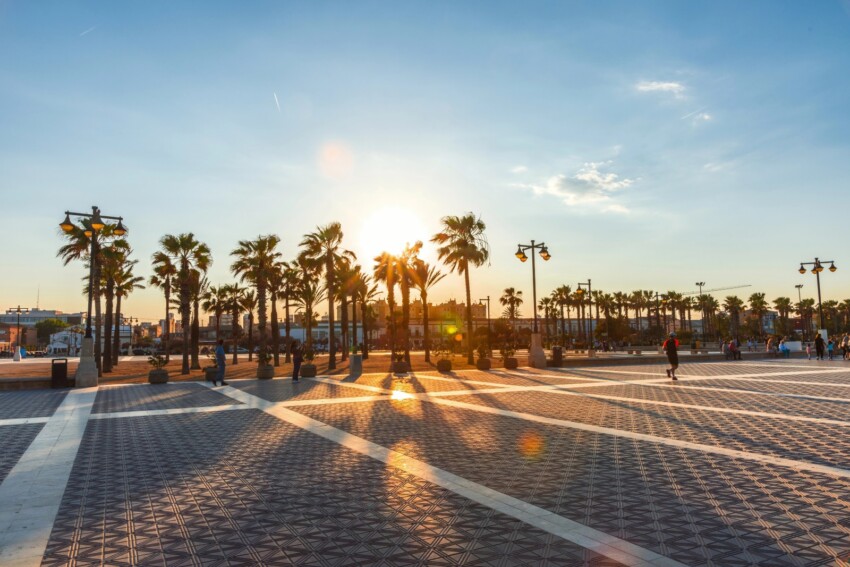
Playa de Las Arenas is one of the must-see beaches in the city and definitely one of the main things to see in Valencia. It is the beach closest to the city centre, equipped with sunbeds and umbrellas during the summer, as well as pedalo and boat rentals and plenty of opportunities for fun. Behind it is a long line of hotels and restaurants, some of which allow you to dine directly on the beach.
It is a beach of fine golden sand, over a kilometre long. There are also numerous children’s games, and it is very convenient to reach thanks to the abundant public transport, mainly buses and the metro. You can also get there easily by bicycle.
The most famous beach in Valencia is probably Playa de la Malvarrosa, a fine sandy beach over a kilometre long and very wide. Equipped with all facilities, it is very crowded in summer, thanks to the presence of additional and rather attractive facilities such as beach volleyball courts and numerous beach restaurants.
During the year, Malvarrosa beach is also active on the events front: every year there is an air festival where aviation enthusiasts can admire civil and military aircraft up close, during the Las Fallas festival in March it is one of the top destinations in town, while during the San Juan festival in July it is here that fireworks are shot off.
Discover Valencia through the eyes of expert guides who will take you on a tour of the city's hidden treasures. Participating in a guided visit or a free tour will allow you to capture the true essence of Valencia.
The free tours are a viable alternative to traditional guided tours. They work like this: participation is free and at the end of the visit you can leave a tip at your discretion. Below you will find our favourite free tour, otherwise you can see the full list by visiting this page.
In the following map you can see the location of the main places of interest mentioned in this article.
City Card allow you to save on public transport and / or on the entrances to the main tourist attractions.

